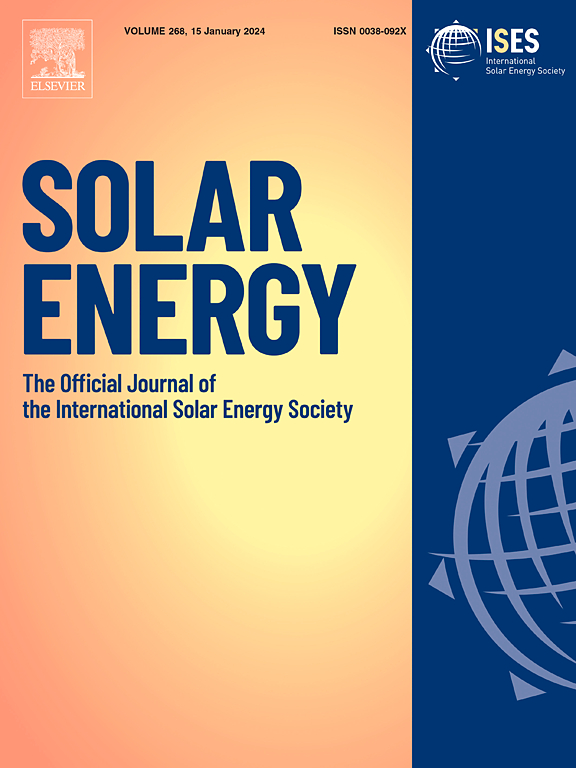验证光伏组件测量性能和保证条件的方法
IF 6
2区 工程技术
Q2 ENERGY & FUELS
引用次数: 0
摘要
本文介绍了一种新的、高效的、准确的方法,将电流-电压(I-V)和功率-电压(P-V)曲线从测量条件转换为数据表的标准测试条件(STC),以验证光伏模块的性能和保修。为了实现这一目标,本文提出了一种方法,在任何给定的测试条件下使用光伏组件的测量数据:(1)使用单二极管模型对其建模,(2)使用牛顿-拉夫森方法从一组非线性方程中提取二极管模型参数,(3)求解模型以生成I-V和P-V曲线,(4)将测量曲线从测量条件映射到STC,并将结果与数据表指标进行比较。通过实测数据对仿真模型进行了验证,仿真模型能够准确表征光伏组件的电特性,最大相对误差为1.37%。该模型在光伏组件上进行了测试,结果表明该组件的性能符合数据表的保修标准,其中测试的光伏组件在运行前两年的平均功率下降为- 4.88%。本文章由计算机程序翻译,如有差异,请以英文原文为准。
Methodology to validate measured performance and warranty conditions of PV modules
This paper introduces a new, efficient, and accurate way to transform current–voltage (I-V) and power-voltage (P-V) curves from measurement conditions to the datasheet’s Standard Test Conditions (STC) for validating the performance and warranty of PV modules. To achieve this, a methodology is presented that uses measurement data of a PV module for any given test condition: (1) models it using the single diode model, (2) extracts the diode-model parameters from a set of non-linear equations using the Newton-Raphson method, and (3) solves the model to generate the I-V and P-V curves and (4) maps the measurement curves from measurement conditions to the STC and compares results to datasheet metrics. The simulation model is validated with measurement data and accurately represents the PV module’s electrical characteristics with a maximum relative error of 1.37%. The model is tested on a PV module, and results show that the module’s performance is consistent with the datasheet warranty standards, where the PV module under test has experienced an average power degradation of −4.88% after the first two years of operation.
求助全文
通过发布文献求助,成功后即可免费获取论文全文。
去求助
来源期刊

Solar Energy
工程技术-能源与燃料
CiteScore
13.90
自引率
9.00%
发文量
0
审稿时长
47 days
期刊介绍:
Solar Energy welcomes manuscripts presenting information not previously published in journals on any aspect of solar energy research, development, application, measurement or policy. The term "solar energy" in this context includes the indirect uses such as wind energy and biomass
 求助内容:
求助内容: 应助结果提醒方式:
应助结果提醒方式:


